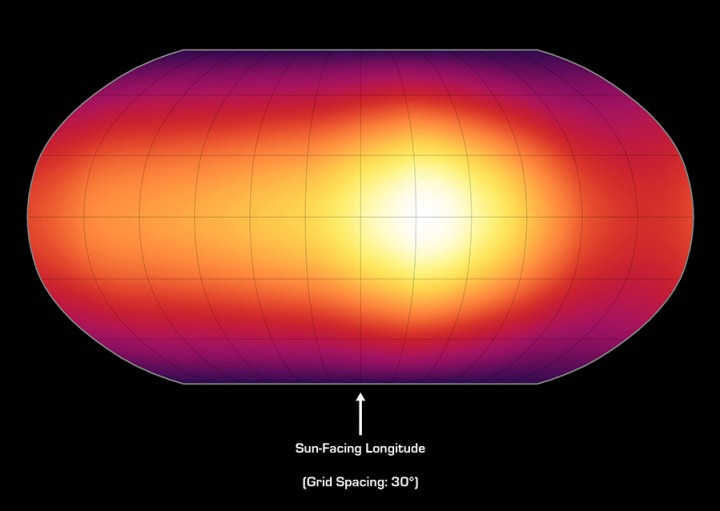Explanation: HD 189733b is a Jupiter-sized planet known to orbit a star some 63 light-years away. But while the distant world is approximately the size of Jupiter, its close-in orbit makes it much hotter than our solar system's ruling gas giant. Like other detected hot Jupiters, its rotation is tidally locked -- one side always faces its parent star as it orbits once every 2.2 days. Using infrared data from the Spitzer Space Telescope, this planet's temperature variations have been mapped out -- the first map ever made for a planet beyond our solar system. Seen here (brighter colors = higher temperatures), the hottest spot on the planet is not at longitude 0.0, the point exactly facing the parent star. Instead, it's about 30 degrees to the east (right), evidence that fierce, planet circling winds influence the temperature. In the planet-wide map, the temperature measurements vary from about 930 to 650 degrees C (1,700 to 1,200 F).
1999 2000 2001 2002 2003 2004 2005 2006 2007 2008 2009 2010 2011 2012 2013 2014 2015 2016 2017 2018 2019 2020 2021 2022 2023 2024 2025 |
Январь Февраль Март Апрель Май Июнь Июль Август Сентябрь Октябрь Ноябрь Декабрь |
NASA Web Site Statements, Warnings, and Disclaimers
NASA Official: Jay Norris. Specific rights apply.
A service of: LHEA at NASA / GSFC
& Michigan Tech. U.
|
Публикации с ключевыми словами:
extrasolar planet - infrared - Планеты у других звезд
Публикации со словами: extrasolar planet - infrared - Планеты у других звезд | |
См. также:
Все публикации на ту же тему >> | |
